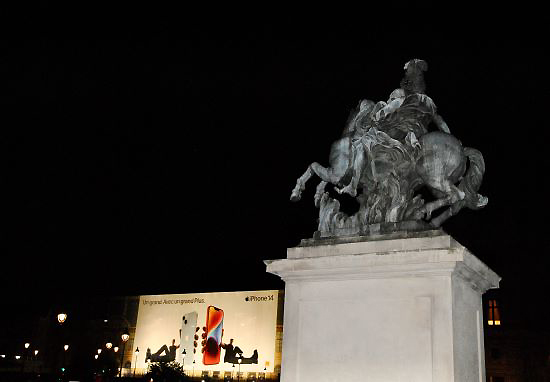4.3. Have the kings become subversive?
THE CHAMPS-ÉLYSÉES, APOGEE OF THE GRAND AXIS,
COULD PROPEL A SUBLIME MODERNITY
But globalized commerce has taken over "the world's most beautiful avenue"and changed its message:
 |
Automobile centenary / Claude Abron |
In brief
* * *
Next,







.jpg)
.jpg)
.jpg)

























